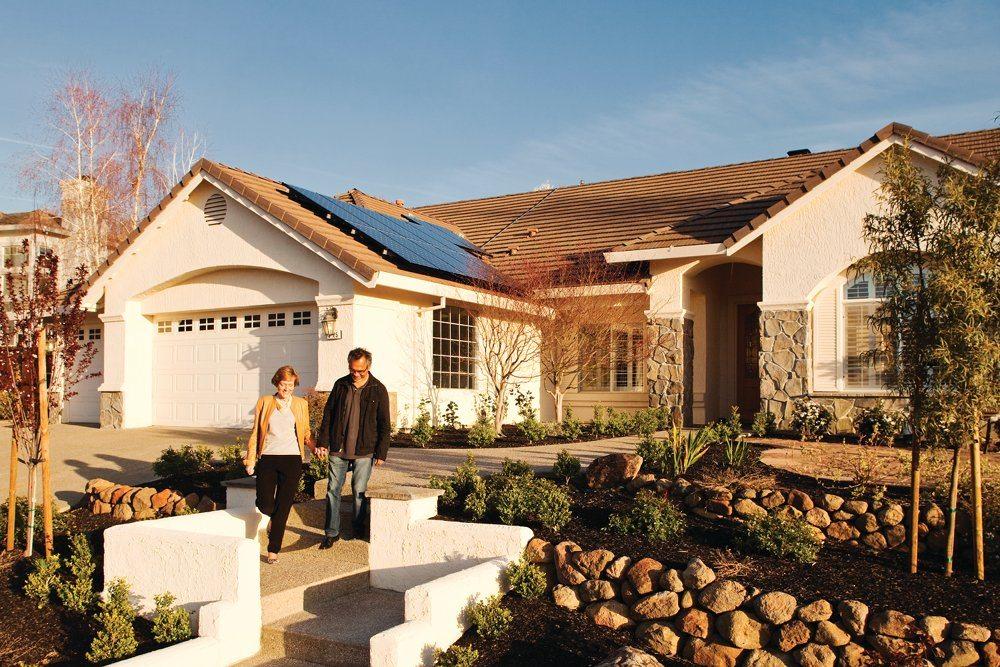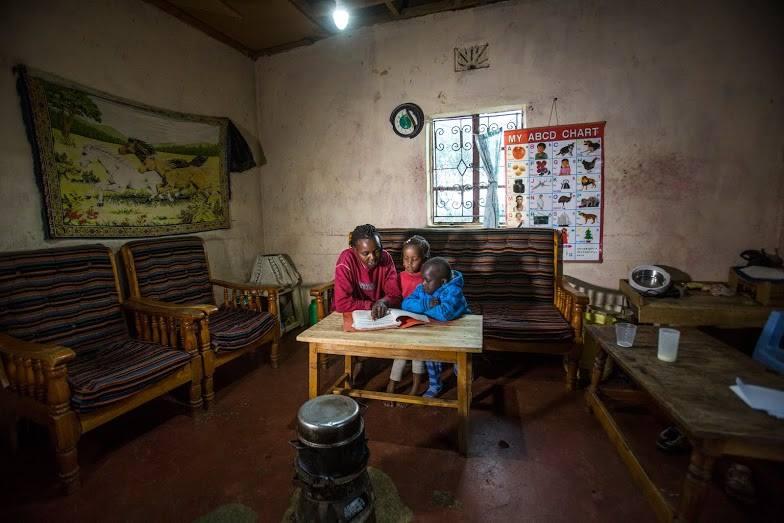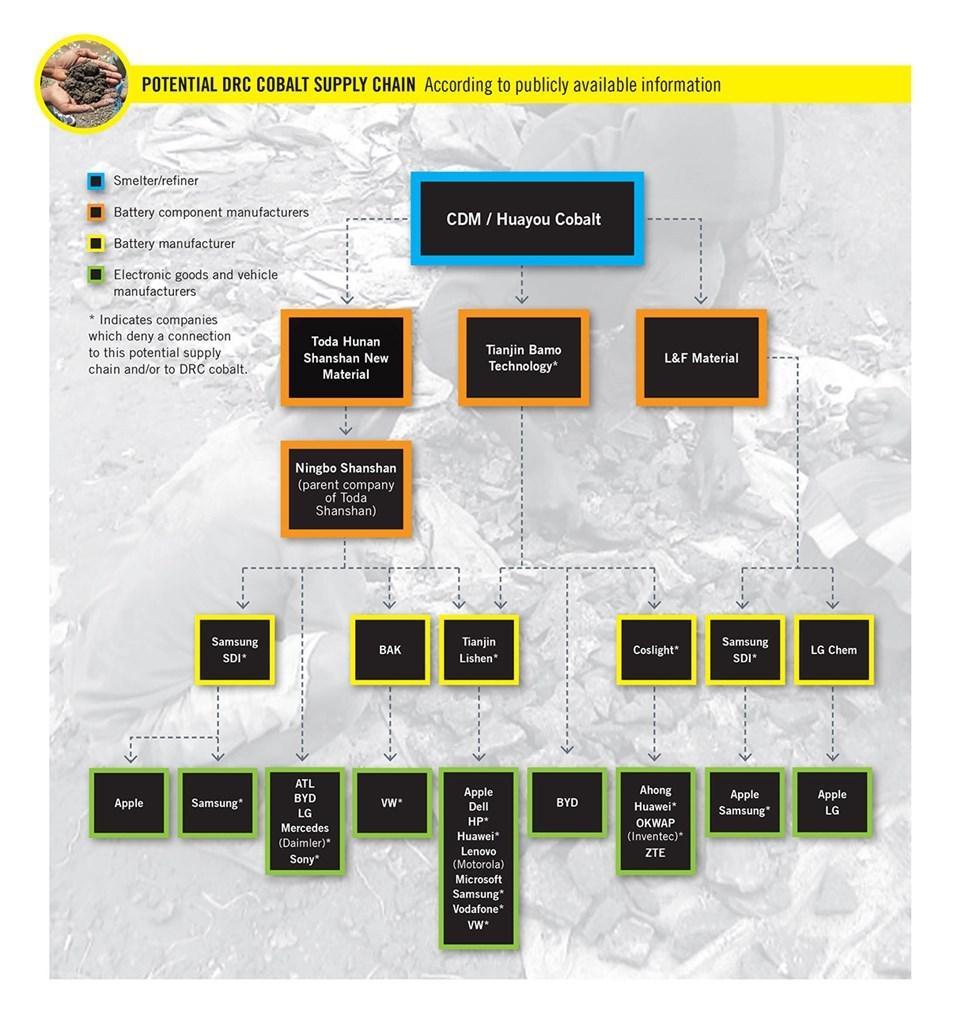3p Weekend: Everything You Need to Know About the Chevy Bolt


With a busy week behind you and the weekend within reach, there’s no shame in taking things a bit easy on Friday afternoon. With this in mind, every Friday TriplePundit will give you a fun, easy read on a topic you care about. So, take a break from those endless email threads and spend five minutes catching up on the latest trends in sustainability and business.
General Motors first unveiled its Chevrolet Bolt concept car at the 2015 North American International Auto Show in Detroit. Now, only a year later, the long-range electric vehicle is gearing up to hit the market.
The real 2017 Chevy Bolt EV -- not a concept, not a model -- hit the floor at the 2016 auto show to dropped jaws and slight disbelief. Many likely doubted that GM could make good on its promises of a Tesla-like range for a Chevy-like price, but it looks like those folks will have to eat their words.
Wondering what all the fuss is about? Spend five minutes learning everything you need to know about the 2017 Chevy Bolt, available for purchase in late 2016.
Designers were given free rein
Chevy calls the Bolt its "first ground-up, long-range electric vehicle" and says designers were given "unprecedented freedom" to make the car of their dreams.
“We were given a blank canvas – a rare opportunity with a unique platform to recast EV design for customers across the spectrum,” Stuart Norris, managing director of design for Chevrolet, said in a statement. “The team answered the challenge with a progressive design distinguished by dramatic graphics and exceptional passenger space.”
The all-electric range is something to write home about
Delivering on its promise of a long-range electric vehicle for an affordable price, Chevy claims the Bolt EV can travel more than 200 miles on a single charge. That blows away not only its own pure electric offering, the Chevy Spark EV, but also its primary competitors: the Ford Focus Electric, BMW i3 and Volkswagen e-Golf.
With the available 240-volt charging unit (professional installation required), users can add 25 miles of range per hour of charging, or charge the vehicle completely in nine hours. On-board tech allows drivers to easily track their energy use and find a charging station while on-the-go.
Advanced aerodynamics deliver high performance
Designers made aerodynamics a top priority, and it shows in the final product. When in motion, wind flows smoothly around the vehicle from the headlamps to the rear wheels. The lightweight aluminum body and smooth proportions cut down on drag to increase both range and pep.
And get this: The underbody is completely enclosed. Because batteries do not require air for combustion, a flat, sealed underbody streamlines airflow and further improves aerodynamics.
Inventive design makes for a roomier cabin and more trunk space
The Bolt owes its seriously roomy interior to a seriously clever design element: a flat battery pack mounted beneath the interior floor. By streamlining the battery pack, Chevy designers were able to make room for five passengers and 16.9 cubic feet of cargo space behind the rear seat.
Inside, passengers sit upright in SUV-like seating positions, enhancing the roomy feel. In the rear, window glass extends all the way to the license plate and integrates with LED taillamps on the liftgate -- making it easier to slide bulky items in and out of the trunk. Rear seats also fold down to extend cargo space to 56.6 cubic feet -- a pretty darn impressive number for a car of this size.
“The flat-pack orientation offered the flexibility to make the most of the proportions while creating a clean, sculpted design," Norris said in a statement. “This really opened up the interior and created a fantastic view from every seating position. All of this additional space gave us a lot of opportunities to play with creative design and storage solutions.”
It doesn't skimp on tech
From a 10.2-inch, tablet-like display, drivers can navigate via GPS, check their contacts, play their music and more. And here's the kicker: They can do it all using nothing but hand gestures for improved safety without sacrificing convenience.
Split-screen and expanded views make it easy to monitor battery range and energy use while jamming out to your favorite Spotify station. And the Bolt EV is also compatible with Apple CarPlay and Android Auto for more seamless integration with a driver's smartphone.
The price won't break the bank
When it comes to range, believe it or not the Chevy Bolt is most directly comparable with the Tesla Model S -- which offers 230 miles of all-electric range for its smallest battery pack. This version, called the Tesla Model S 70, sells for $70,000 ($62,500 after federal tax incentives and possibly less with state incentives, depending on where you call home).
The Bolt EV, on the other hand, will only run you ... wait for it ... $37,500. That's $30,000 after applying the federal tax credit, which puts it on par with both combustion-engine vehicles of the same class and competitors' EVs that only offer a fraction of the range. Plus, you'll never have to buy gas again. Sounds like a pretty sweet deal.
The bottom line
Last year, after checking out the Bolt EV concept car at the 2015 auto show in Detroit, 3p's Leon Kaye predicted the market version would represent a "huge step closer toward the holy grail of electric vehicles: affordability and sustainability."
After seeing it for ourselves, we're inclined to say he was right. Even given the rock-bottom price of gasoline, the promise of an all-electric range that far exceeds the average American's daily commute -- for a price real drivers can actually afford -- has the potential to lure even skeptics over to the zero-emission dark side.
What do you think? Would you take the Bolt EV for a test drive? Tell us about it in the comments section.
Image credits: Chevrolet
Sunrun CEO on the Bright Future of Solar Energy


By Lynn Jurich
In 2015, consumers and government leaders demanded cleaner, cheaper energy. As an industry, we heard you and we’re delivering.
Here’s why I believe the future of energy is already here, in 2016 and beyond.
The world is looking for climate solutions
Change starts with a conversation. In 2015, the dialogue around climate change picked up steam – from domestic and global policymakers to the private sector, to our friends and neighbors. It’s clear that climate change is the pressing challenge of our generation and immediate action is critical. Solar is meeting this growing demand to decarbonize our energy sources.
During the Paris climate talks in December, governments from around the world solidified a monumental agreement to slash greenhouse gas emissions in half by 2050. That’s enough to avoid dangerous temperature increases in our atmosphere. As nations and people examine how they can advance this agreement, many will turn to the sun. At Sunrun, we have believed in the power of the sun all along and see more Americans starting to believe the same. This trend is inevitable. Solar continues to grow as part of our nation’s energy mix. According to the Solar Energy Industries Association, solar accounted for nearly a third of all new electricity generation capacity in the U.S. in the first three quarters of 2015.
Following the international community’s ambitious agreement, U.S. leaders from both sides of the aisle echoed this sentiment by extending the federal solar investment tax credit (ITC) for the next five years. This is the solar industry’s only federal incentive, and extending it helps level the playing field against decades of fossil fuel subsidies; it also allows Sunrun to grow more quickly.
Global and national decisions will pave the runway for solar to continue to prove its value in the next few years and beyond. It’s clear that the world needs and wants clean energy – and solar in particular – to succeed.
The future is here ... It's just more distributed
The world is decentralizing, and the energy industry is no different. Smart, local technology brings benefits at many levels: for consumers, the grid and the economy in the form of jobs.
Rooftop solar saves homeowners money on their electricity bills. Producing solar on rooftops also helps the whole community: Solar increases grid resiliency and allows utilities to reduce infrastructure costs. Many industries are decentralizing with benefits to all stakeholders, and energy will be no different. The value that solar delivers is too great to turn back.
The states that are making this step to move their infrastructure to the 21st century are seeing the benefits. The opening of Sunrun's new corporate office in Denver provides a great example of how pro-business and pro-solar policies foster growth at the state level. Sunrun worked closely with Gov. John Hickenlooper and Colorado state officials in 2015, and over the course of the next few years we anticipate hiring up to 800 new employees from the community. Partnerships like this enable the residential solar industry to keep growing and reach new milestones.
Sunrun will continue to advance its local presence in key markets by partnering with states and local leadership who see the potential in solar. And we will keep advancing solar’s value so we can bring this benefit to homeowners, the grid and the economy in more places. We commend policymakers like South Carolina Gov. Nikki Haley, who opened new solar markets in 2015, and encourage more to follow suit this year.
Consumer choice will propel us
Consumers continue to take the power back from monopolies. That’s a good thing.
In the last five years, the “as-a-service” economy has exploded. From companies like Uber and Lyft to Airbnb, consumers now have an abundance of choice in nearly every industry. Their freedom to choose will elevate the clear leaders in each category based on who gives them the best customer experience and value.
Solar is no exception. We’re no longer a niche industry, and many companies are competing for customers. Growth like this is what happens when new technology intersects with drivers of change like the need to shift to clean energy, to modernize our infrastructure and to give choice to consumers. Ultimately, consumers will be the winners, with companies like Sunrun delivering more value and the best service to them.
Lynn Jurich, co-founder and chief executive officer of Sunrun, looks to the future of the energy industry and the various factors catalyzing clean energy adoption. Sunrun is the largest dedicated residential solar company in the United States.
Images courtesy of Sunrun
Rubio, Bush Continue to Dismiss Climate Change


Not all of the Republican presidential candidates deny the existence of climate change. Florida Sen. Marco Rubio and former Florida Gov. Jeb Bush, for example, have both acknowledged it exists. But both of the presidential candidates continue to dismiss climate change as an important issue, a fact underscored in a recent report in the Tampa Bay Times.
“I don't have a plan to influence the weather,” Rubio said last month at a town hall meeting in New Hampshire. Bush said on the same day in New Hampshire, “It wouldn't be on my first page of things that wake me up in the middle of the night in a cold sweat.”
What else do the candidates have to say about climate change? Back in July, Bush told Bloomberg BNA that “the climate is changing” and acknowledged that “human activity has contributed to it.” However, he called the Environmental Protection Agency’s Clean Power Plan, which requires reductions in carbon emissions from power plants, “irresponsible and ineffective.” In a statement on the Clean Power Plan, Bush said: “Climate change will not be solved by grabbing power from states or slowly hollowing out our economy.”
“I do not believe that human activity is causing these dramatic changes to our climate the way these scientists are portraying it,” Rubio said on ABC's "This Week" in 2014. “I do not believe that the laws that they propose we pass will do anything about it, except it will destroy our economy.” Rubio has also blasted the EPA’s Clean Power Plan. In a statement he said, “I will stop the EPA’s Clean Power Plan, which, if enacted, would have a devastating impact on affordable energy in exchange for little to no environmental benefit.”
Florida is already experiencing climate change effects, with many more to come
While Bush and Rubio dismiss the importance of climate change, their home state of Florida experiences its impacts. Scientists have observed changes in the Sunshine State that are consistent with early climate change effects, according to the Natural Resources Defense Council. The changes include retreating and eroding shorelines, dying coral reefs, salt-water intrusion into the freshwater aquifer, increasing numbers of forest fires, and warmer air and sea-surface temperatures.There are many more devastating climate change effects to come, the NRDC stated. Florida’s average temperature will likely rise between 4 degrees and 10 degrees Fahrenheit over the next 100 years. The summer heat index will likely increase by 8 to 15 degrees. It’s an increase the NRDC said “will be the most dramatic in the nation.” Sea levels could rise by eight inches to more than two feet by 2100.
Climate change will impact everything from freshwater supplies to the coastline to human health. The NRDC projects that coastal ecosystems, including tourist attractions such as the Everglades and coral reefs, will be harmed by sea-level rise, rising temperatures and rainfall alterations. Those projected changes will alter the state’s $45 billion to $50 billion annual revenue from tourism.
Climate change will impact every U.S. region
Florida is not the only region to be impacted by climate change. Every region in the U.S. is already feeling it and will only see more. “Climate-related impacts are occurring across regions of the country and across many sectors of our economy,” the EPA stated on its website.
Take the Southeast, where Florida is located. The majority of states in the Southeast are along 29,000 miles of coastline on either the Gulf of Mexico or the Atlantic Ocean. Climate change is causing temperature increases in this region. The average annual temperatures since 1970 have increased by about 2 degrees Fahrenheit, and temperatures are projected to increase by 4 to 8 degrees by the end of the century. Hurricane activity and heavy rainfall have also increased in the Southeast, and sea-level rise is occurring.
Consider also the Southwest, which the EPA calls “the hottest and driest region in the nation.” The region is home to about 56 million people, and 90 percent live in cities. The population of the Southwest is expected to increase by almost 70 percent by mid-century. One state in the region, California, has experienced four years of drought. Snowpack in California is important as it accounts for a third of the state’s water supply. California farmers grow half of the nation’s fruits, vegetables and nuts. Less water means less crops.
Democratic candidates offer sharp contrast on climate change
Democratic candidates not only believe climate change is real, but also have plans to deal with it. Vermont Sen. Bernie Sanders recently said, “This planet and its people are in trouble.” He warned that “unless we get our act together, we will see in years to come more droughts, more floods and more extreme weather disturbances.”Sanders also cited his plan to “reduce carbon emissions 80 percent by 2050 by putting a tax on carbon and making aggressive investments in renewable energy and energy efficiency.”
Former Secretary of State Hillary Clinton said that as president she would “make combating climate change a top priority from day one, and secure America’s future as the clean energy superpower of the 21st century.” Her plan to deal with climate change includes expanding the amount of installed solar capacity to 140 gigawatts by the end of 2020, which is a 700 percent increase from current levels.
Come November, Americans will cast their ballots and decide who will become the next president. Their decision will decide whether the U.S. deals with climate change by reducing greenhouse gas emissions or puts the issue on the back burner.
Image credit: Flickr/DVIDSHUB
The First Hyperloop Trip Could Happen This Year


Clean-tech visionary Elon Musk first unveiled his idea for a high-speed ground transport system called Hyperloop back in 2013. The concept -- in which passengers are transported in magnet-propelled capsules at more than 750 miles per hour -- was quickly dismissed by many as a pipe-dream.
But, while most of us weren't paying attention, a handful of private companies have been quietly working to make Musk's vision a reality. Now two of these firms (both unaffiliated with the Tesla and SpaceX CEO) say they are ready to begin testing the technology.
Hyperloop Technologies made waves at the end of last year when it acquired 50 acres of land near Las Vegas to test its version of the frictionless propulsion system. At the beginning of this month, the company granted a CNNMoney camera crew access to the site, where it is building a three-mile test loop that could see its first travelers by the end of this year. The company plans to test Hyperloop pods at speeds of up to 335 miles per hour -- roughly half the speed of a full-scale system, the Associated Press reported.
While the idea of traveling just under the speed of sound may sound like something straight out of "The Jetsons," the science behind the technology is fairly simple, said Hyperloop Technologies CEO Rob Lloyd.
"You just remove the pressure from inside an enclosed environment," he told CNNMoney. "You can think of that as a tube. You remove the friction of wheels by levitating that pod inside the tube. Then it takes a very little amount of energy to move that pod at incredible speeds."
Engadget caught up with Lloyd at the Consumer Electronics Show in Las Vegas earlier this month, where he said his company's test loop should be ready for passengers to try out during the 2016 holiday season.
Meanwhile, the similarly-named Hyperloop Transportation Technologies is joining the race for the first working track. On Wednesday, it filed for construction permits to build a five-mile loop in Quay Valley, California. The planned system will be powered by solar energy, further reducing impact. Notably, it will be a "full-scale hyperloop, not a test track," Bibop Gresta, the company's chief operating officer, said at a CNBC/TradeShift technology event in Davos, Switzerland, on Thursday. "In 36 months we will have the first passenger in the first full-scale hyperloop."
The Los Angeles-based startup is operating on a fairly unique business model: It is entirely crowdfunded, and its staff works in exchange for equity in the company, rather than a paid salary -- indicating they're fairly bullish the concept will take off. The company told the Verge that it has talent from NASA, Boeing, Tesla and SpaceX working among its 480-plus volunteers.
The Quay Valley site is strategically located between Los Angeles and San Francisco, making it the symbolic first step on the company's journey to carry passengers between the two cities in under 30 minutes. The site is also home to a proposed solar-powered, self-sustaining "model town" of the same name, under development by Los Angeles-based GROW Holdings.
Hyperloop Transportation Technologies expects to begin principal construction on its track in the middle of this year. "Everyone traveling on California's I-5 in 2016 will be able to see our activities from the freeway," Dirk Ahlborn, the company's CEO, said in a statement. Although empty pods will be tested at speeds of 760 miles per hour, pods carrying passengers will be limited to around 160 miles per hour for safety reasons, Mashable reported.
While Elon Musk maintains that he is not affiliated with any Hyperloop companies, he said via the SpaceX website that he is "interested in helping to accelerate development of a functional Hyperloop prototype." To that end, SpaceX launched an open competition last year that challenged college students and independent engineering teams to design and build the best Hyperloop pod. Contestants will convene later this month at Texas A&M University to submit their designs in the hopes of winning the $50,000 prize.
To support the competition, SpaceX is constructing a one-mile test track adjacent to its headquarters in Hawthorne, California. Teams will test their human-scale pods during a competition weekend at the track, currently targeted for summer 2016, the company said.
So, who will win the race for the first functional Hyperloop? Only time will tell, but I for one am encouraged to finally see some progress on the concept. With the U.S. sorely lacking in high-speed ground transportation, the promise of a functional Hyperloop carries with it the possibility of leap-frogging the high-speed rail technologies now in use in Europe and Asia and moving directly to futuristic pod travel.
The primary drawback is, of course, cost. While the cost of the Nevada test track was not disclosed, the five-mile loop planned for Central California will cost an estimated $150 million. Musk himself estimates a fully-scaled California Hyperloop, between Los Angeles and San Francisco, would cost between $6 billion and $10 billion to build. A cost that high clearly brings scalability into question.
"The physics of it works," R. John Hansman Jr., an aeronautics and astronautics professor at the Massachusetts Institute of Technology, told the Associated Press. "The real question is, can you get it to a point where it will be cost-competitive with other means of transportation? That's a big unknown."
The fully-realized vision of supersonic transport between cities is likely still a long way off, but mounting interest in the technology proves it's way more than a daydream. In the spirit of moving forward, we'll have our eye on the progress of these Hyperloop tests and keep champagne on ice for the winner.
Image credits: Hyperloop Technologies, Inc.
Activist Ai Weiwei Takes The Lego Group to School


Dear Legos. The colorful building-block toys have been favorites of children young and old since their manufacture in 1949. The individual blocks are so durable that decades-old sets interlock perfectly with the pieces from one of today's complicated Millennium Falcon sets.
Sure, the company behind the popular toys had its challenges, like the controversy over "girl" Legos. But it generally ends up on the right side of history.
The blocks' durability, combined with their place in the collective subconscious as universal symbols of toys, children and innocence, makes them an ideal building material for modern artists. Those are presumably the reasons Chinese dissident Ai Weiwei used Lego building blocks in a floor installation of portraits depicting 175 prisoners of conscience -- a part of his @Large exhibit at Alcatraz -- in 2014. Alcatraz is not a museum, of course; it's a tourist destination and former prison located in the middle of San Francisco Bay. The site -- a national park in the U.S., home to the world's highest incarceration rates -- was ideal for the famous artist's message, even though, as a political prisoner in Beijing at the time, he had to rely on assistants to actually construct the instillation.
The exhibit was so well-received that Ai planned to use Legos again for an exhibit in Melbourne, Australia. However, when his team reached out to place a bulk order last fall, his request was declined via email, which Ai shared on his Instagram account:
The museum received Lego's reply via email: "We regret to inform you that it is against our corporate policy to indicate our approval of any unaffiliated activities outside the Lego licensing program. However, we realize that artists may have an interest in using Lego elements, or casts hereof, as an integrated part of their piece of art. In this connection, the Lego Group would like to draw your attention to the following: The Lego trademark cannot be used commercially in any way to promote, or name, the art work."The title of the artwork cannot incorporate the Lego trademark. We cannot accept that the motive(s) are taken directly from our sales material/copyrighted photo material.The motive(s) cannot contain any political, religious, racist, obscene or defaming statements. It must be clear to the public that the Lego Group has not sponsored or endorsed the artwork. Therefore I am very sorry to let you know that we are not in a position to support the exhibition Andy Warhol | Ai Weiwei by supplying the bulk order." 23. Sept. 2015
Ai decided to go public with the bulk-order block after news broke three short weeks later that Lego planned to build a new Legoland in Shanghai. With Chinese government officials all-too-cozy with business interests, it makes sense that the Lego Group would be reluctant to get on their bad side by supporting their most troublesome political activist. When Ai went public, Internet outrage ensued and collection points were set up around the globe for fans to donate their Legos to Ai's new project.
On Jan. 1, lightning speed given the holidays, the Lego Group waved the white flag on its website, redacting its previous policy:
"The LEGO Group has adjusted the guidelines for sales of Lego bricks in very large quantities."Previously, when asked to sell very large quantities of Lego bricks for projects, the Lego Group has asked about the thematic purpose of the project. This has been done, as the purpose of the Lego Group is to inspire children through creative play, not to actively support or endorse specific agendas of individuals or organizations.
"However, those guidelines could result in misunderstandings or be perceived as inconsistent, and the Lego Group has therefore adjusted the guidelines for sales of Lego bricks in very large quantities.
As of January 1st, the Lego Group no longer asks for the thematic purpose when selling large quantities of Lego bricks for projects. Instead, the customers will be asked to make it clear - if they intend to display their Lego creations in public - that the Lego Group does not support or endorse the specific projects."
While there is no proof that the previous policy had anything to do with the company's business interests in China, the timing is suspicious given that Ai used Lego products previously without a problem and Legoland Shanghai is in sight.
While the Lego Group ultimately came to the right decision, the toy manufacturer learned a difficult lesson. Trying to control who buys your products looks suspiciously like censorship. The toy company's effort to disassociate from Ai backfired when headlines the world over linked the two. It's an important reminder that, in the world of social media, brands don't control their reputations -- at best they can only hope to court the world of public opinion.
Image credits: Jen Boynton, Ai Weiwei
How This Solar Startup Became a Multinational Social Enterprise


If you thought solar energy in developing countries is the purview of NGOs and social enterprises, M-Kopa will prove you wrong. This Nairobi, Kenya-based company, founded in 2012, combines solar technology with mobile phone payments, which is increasingly the preferred currency in Africa. The result has been a revolution that has electrified homes in Kenya, Uganda and Tanzania.
M-Kopa's concept is relatively simple. Most rural regions throughout Africa lack any access to the grid, and even if they do, most residents cannot afford to pay for the electricity anyway. Home solar installations have become far cheaper and more effective, but even at a price of $200, they are still too expensive for most families in the region. M-Kopa solves the problem by installing the system at homes and allowing its customers to pay them off slowly over time (hence the name Kopa, which means "to borrow").
Users pay the equivalent of about 50 cents a day for an electrical system that provides enough power for lighting, phone charging and keeping small appliances such as radios humming. Users can pay every day, or for a week or month in advance through their cell phones. If users don’t pay, the lights go off. Once they pay, the lights come back on within five minutes.
That model has resulted in a company that now has 300,000 customers, equating to 1 in 20 households in Kenya alone. M-Kopa’s Nairobi headquarters is now home to over 700 employees.
Last year, M-Kopa scored a huge shot in the arm thanks to its winning a Zayed Future Energy Prize (ZFEP), which can be best succinctly described as a Nobel Prize-like award for clean energy. Its 2015 US$1.5 million prize is allowing the company to invest in what largely has made it so successful: its employees. To gain more insight on the prize's impact, I interviewed Chad Larson, M-Kopa’s co-founder and chief financial (and credit) officer.
“One of the biggest challenges we have faced is that if we are going to continue to be a large Nairobi-based company, we’re going to need a GE-style training program where we can invest in training managers and staff,” said Mr. Larson during our talk at the Masdar booth at Abu Dhabi Sustainability Week.
Every company has growing pains, which can become apparent when a product or service takes off. Much of M-Kopa’s challenges were cultural. Some of the company’s executive leadership, including its co-founders, moved to Kenya from Europe or the United States; the rest of the management and staff is local. Challenges such as encouraging employees to be proactive, management approaches and coping with constructive criticism became challenges for the organization.
Receiving a ZFEP award has allowed M-Kopa to invest in a training program that help its employees adjust with future growth, Mr. Larson told me. The company has launched more than 20 classes covering a host of topics from email communication, improving soft-skills crucial for business and delegating tasks. For those of us on either side of the pond, these classes may sound hum-drum. But as Mr. Larson explained, this education program has made a difference in boosting employees’ confidence and hone their skills while the company pursues new growth opportunities — and they are sprouting like weeds across Africa, where the middle class is expanding rapidly.
As a result, this ambitious social enterprise continues to expand. M-Kopa has rolled out more products to more homes, and many long-time customers are now ready to invest in even more powerful home electrification systems. The result has been several benefits for Kenyan society: less burning of dirty kerosene; more opportunities in education with the ability to study at night; and improved communications plus more economic opportunities for citizens with the ability to recharge that phone quickly and cheaply. And all of this has been unfolding cleanly and cost-effectively within and beyond Kenya with almost no carbon emissions.
Image credit: M-Kopa
Disclosure: Leon Kaye’s Abu Dhabi Sustainability Week expenses were provided by Masdar
Encouraging Middle Eastern Youth to Embrace More Sustainable Careers


Oil and gas has long driven the United Arab Emirates' transformation from a poor and barren backwater to one of the wealthiest nations on Earth. Nevertheless, the ever-looming scenario of peak oil has long been on the nation’s mind. To that end, the past decade has seen the country launch a bevy of measures to diversify the economy — Masdar, for example, is one company that has helped Abu Dhabi add clean technology to its business portfolio.
But in order to attract the country’s youth, whose parents and grandparents have long viewed the petroleum industry as the best option within which to build careers, the UAE realizes it needs to reach out aggressively to younger generations. One such program, which aims to engage youth and inspire them to consider an alternative to a career within the petroleum sector, launched last week in Abu Dhabi.
The RenewAbility Debate, which debuted at this year’s Abu Dhabi Sustainability Week (ADSW), drew hundreds of students from across the UAE and others from 29 high schools around the world. With the goal to raise awareness about sustainable development in the Middle East, the RenewAbility Debate offered a more youth-oriented agenda as part of the Middle East’s largest conference on sustainability.
Moderated by Emirati columnist Khalid Al Ameri, the RenewAbility Debate featured an interview and Q&A session with the rapper Akon on his Akon Lighting Africa initiative. Speaking about this event, Akon told the gathering: “One of my missions is helping to empower youth across the world to be active on sustainability issues. We need to come together to learn more about how we make the world a better place.”
It’s easy to say we want to make the world a better place; the challenge is figuring out where to start and how to discover how one can best make such an impact. With that big question in mind, the RenewAbility Debate initiative was designed to support the transfer of knowledge from current leaders in the sustainability industry to the next generation of UAE and other global leaders. The event paired some of the industry’s leading voices in sustainability with young Emiratis for a months-long immersion on the benefits of renewables in order to limit climate change to 2 degrees Celsius by 2030. By debating the issues related to renewables and climate change, the goal was to get more youth inspired to consider a future in clean energy and keep the conversation flowing in local media -- and, even more importantly, on social media.
This program started months ago with a long process of mentorship. Working with Masdar and the country’s foreign ministry, the program’s managers selected students who were interested in shadowing the UAE’s delegation to Paris for the COP21 climate talks. They underwent intensive training in public speaking, debating tactics, compiling data for presentations and grasping the most current issues related to climate change. Next, they attended COP21 in Paris and continued their work in the weeks leading up to ADSW.
The debaters included leaders from the UAE government’s climate-change task force, NGOs and academia. This group linked up with the students who were accepted to this program: Noora Abdulrahman, Maryam Al Mazrouei and Mohamed Al Ghailani, students of Masdar Institute, and Dikirani Thaulo, a 2015 winner of the Zayed Future Energy Prize.
“No matter what career I decide to follow, some skills are essential for success,” said Mohamed Al Ghailani, one of the student debaters. “This includes organizing ideas in a cohesive and eloquent manner, the ability to present these ideas confidently, and being prepared enough to answer questions and refutations convincingly and articulately. These are all lessons that you learn as a debater and I am confident that they will prove useful in the near future."
Building on efforts to encourage more Emiratis to be active in their communities, the RenewAbility Debate also included Emirati leaders who turned their personal passions into rewarding careers. Emirati entrepreneur and "Just Read It" author Omar Al Busaidy, local cartoonist Rashed Al Harmoodi, and other local celebrities joined the discussion so that they could inspire students with their personal stories of developing their most keen interests by harnessing a spirit of innovation.
Hence the debate began — one that has long been underway here in North America and Europe, but is still new here in the Middle East. Do we need to consider more options for renewables other than solar and wind power, which always receive the lion’s share of the debate? Is the focus on renewables enough, or must there be a wider array of options for sustainable development, such as green building, urban farming or even geoengineering? Do the United Nations' Sustainable Development Goals cast a wide enough net to ensure the world can meet its climate change targets by 2030?
Clearly, more events like this are needed to engage UAE youth and have them consider their options in a future that most likely will not be centered on petroleum. Nevertheless, the students and audience who participated in the event agreed that last week’s debate would have a ripple effect and encourage more students to consider a career more aligned with sustainable development.
“The impact of renewables in achieving and accelerating sustainable development can’t be ignored or denied,” said Maryam AlMazrouei, another student debater. “What matters at this stage is to put the right framework, right platform, the right incentives and, more [importantly], the right leaders. We are responsible for the future generation and we have to find a way to get them all to work together in a very integrated manner.”
Image credit: Masdar
Disclosure: Leon Kaye’s Abu Dhabi Sustainability Week expenses were provided by Masdar
4 Fundamentals Entrepreneurs Should Know About Crowdfunding


By Lewis Robinson
Crowdfunding is the act of raising finances to fund a new business venture through donations done in an online platform. Examples of such online platforms for crowdfunding include Indiegogo, Crowdfunder and Kickstarter, among others. The fundraising window is usually open for a specified period, say 90 days, while the charges and rules are different from one platform to the other.
The entrepreneur is allowed to launch a donations-acceptance campaign in which he or she provides details, such as the nature of the business venture, the fundraising deadline and the total amount of money the campaign is anticipated to collect. Willing donors are usually free to give a stated amount. Sometimes rewards are given as appreciation through the crowdfunding platform or website. Viable projects for crowdfunding campaigns range from charitable to creative or educational activities. Each of the crowdfunding platforms tends to focus on a particular category of ventures.
Generally speaking, there are three types of crowdfunding:
- Donations crowdfunding: People give funds without expecting a tangible reward. Acknowledgments, which may include tokens such as free tickets to an event, are sometimes given. In donation crowdfunding, donors give money merely because they support and have faith in the project.
- Debt crowdfunding: People lend out their money and get it back with interest after a stated period. They thus are rewarded with the interest while contributing toward the success of the project. Some types of debt crowdfunding platforms do not give interest on the money loaned out.
- Equity crowdfunding: Donors get equity as the reward, which may be in the form of shares or business stake. The value of the stake may go up or down depending on the performance of the enterprise.
Entrepreneurs thinking about crowdfunding should keep the following in mind:
1. Consider your crowdfunding platform
The entrepreneur should first carefully decide on the most suitable type of crowdfunding for the business venture or project. The decision, in turn, guides in a strategic determination of the best crowdfunding platform. One should also do research on similar and successful projects that have been done previously. The type of crowdfunding website used in the campaigns should be analyzed. The merits and demerits of different platforms on the project should be weighed to come up with the best decision.2. Make a plan
Crowdfunding campaigns are similar to business marketing. Therefore, financial investment should be made on the development of plausible and efficient strategies. The use of creative materials such as business plans and campaign videos enhances the campaign. The vision of the project should be clearly stated to convince target donors. The entrepreneur should seek to win the trust of people through a well-designed professional campaign. Careful and professional preparation of the message, and videos for posting on the crowdfunding platform is vital.3. Keep marketing after launch
Social media networks may be used to continue marketing your project after launch. This move not only solidifies the trust of interested supporters, but it also attracts new potential funders. Monitoring of the workflow of the crowdfunding campaign, as well as performance recording, is very necessary. Professional assistance may be required; invest on an experienced campaign manager. The entrepreneur should be available to give feedbacks to concerns of interested people.4. Analyze the campaign as it runs
An entrepreneur should be able to study the campaign performance and come out with ways of improving it. The application of business process-management skills helps in assessing the of the crowdfunding campaign. Some analytics such as Facebook 'likes' and Twitter 'followers' may be misleading if not properly interpreted. The number of pledges is a sure way of analyzing the performance of the crowdfunding campaign. Reliable analytics dashboards and platforms may be employed when there are experts to interpret the analysis results. Strategies should be devised to convert followers and viewers into supporters. An early momentum is vital towards the success of a crowdfunding campaign.While crowdfunding is meant to pool together funds for a business venture or project, its success greatly depends on the planning, investment and monitoring throughout the campaign period.
Image credit: Pixabay
Lewis Robinson is a business consultant specializing in social media marketing, CRM, and sales. He’s begun multiple corporations and currently freelances as a writer and business consultant.
New commission to help business engage with SDGs


A new commission of business, labour and civil society leaders, has been set up to help businesses engage in achieving the SDGs.
Established by Unilever CEO Paul Polman and former United Nations Deputy Secretary General Mark Malloch-Brown, and launched at the World Economic Forum in Davos, the Global Commission on Business and Sustainable Development will work over the next year to outline new business and financial models, as well as market opportunities for companies who are invested in sustainable approaches.
“A massive prize awaits business if it successfully ushers in an era of shared prosperity and increased sustainability,” said Commission Co-Chair Mark Malloch-Brown. “Governments and international organizations alone cannot build the future we need. Business is the key to accelerating the transition.”
Other members of the Commission include: Laura Alfaro, Professor, Harvard Business School, Peter Bakker, President, World Business Council on Sustainable Development (WBCSD); Sharan Burrow, General Secretary of the International Trade Union Confederation (ITUC); Bob Collymore, CEO of Safaricom; John Danilovich, Secretary General of the International Chamber of Commerce (ICC); Hendrik du Toit, CEO, Investec Asset Management and John Fallon, CEO of Pearson PLC.
Your Smartphone May Be Linked to Child Labor


Child labor controversies in the tech industry have been around for almost as long as the cell phone. Some pundits will argue it's an endemic evil of the tech industry: The demand for low prices spurs companies to seek out contractors that use labor practices deemed unacceptable to Western consumers, like child labor, trafficking and inadequate pay.
And large corporations know that while low prices are often the market drivers of their niche industries, ethics speak volumes as well. So, corporations are often just as quick to condemn child labor practices abroad and announce strategies and benchmarks that will prove to consumers that they are listening.
A recent Amnesty International report, however, suggests that human rights abuses still take place in the tech industry -- and that they are an ingrained part of the mechanism that brings us our electric car batteries and smart phones. Sixteen multinational tech companies, including Apple, Samsung, Daimler and Microsoft, have been accused of supporting and furthering human rights abuses through their dependence on artisanal cobalt mining in the Democratic Republic of Congo.
"The growing global market for portable electronic devices and rechargeable batteries is driving the growing demand for the extraction of cobalt, a key component in lithium-ion rechargeable batteries," say the authors of the report. They also note that 20 percent of the country's highly sought-after cobalt comes from its southern regions, where more than 110,000 miners provide the backbone for a global industry with lax safety regulations and heightened health risks for children. According to a 2014 UNICEF investigation, as many as 40,000 young children work in DRC's southern mines, usually without safety masks and gear.
"As with adult miners," Amnesty International corroborated, "they were exposed to high levels of cobalt on a consistent basis, but did not even have gloves or face masks to wear." In most cases, the authors pointed out, the financial gain of their work was nominal: "[The children reported] they worked for up to 12 hours a day in the mines, carrying heavy loads, to earn between one and two dollars a day."
Amnesty International traced the potential supply chain of DRC cobalt from the mine to the lithium-ion battery manufacturers in China and South Korea, on to the final destination: the smartphone and electric car battery multinationals.
The authors reached out to lithium-ion battery manufacturers as well as electric battery and smartphone manufacturers. Daimler, which manufactures electric car batteries, offered one of the more forthcoming responses:
“Due to the high complexity of automotive supply chains, we are, however, not able to definitely confirm whether or not cobalt in our products originates from this region or from the mentioned companies at any stage within our supply chains.”
The company said that it does conduct regular reviews to guard against child labor and to ensure sustainable business practices are being applied. Amnesty International notes, however, that the company did not state whether its reviews follow the standards established by the Organization for Economic Co-operation and Development (
According to Amnesty International, Apple did not directly address the researchers' questions about its cobalt procurement policies. It did, however, state that it was "currently evaluating dozens of different materials, including cobalt, in order to identify labor and environmental risks as well as opportunities for Apple to bring about effective, scalable and sustainable change.” The authors note that Apple has not explained why it did not addressed cobalt mining controversies before this date.
The phenomenal growth of the smartphone industry puts increasing demand on corporations to stay ahead in their material procurement. But as the report succinctly points out, it also offers an excellent venue for developing standards that will ensure human rights abuses don't become part of the mechanism that supplies our technology. Companies will benefit from consumer confidence in both their products and their ethical choices.
For more information, check out the video below:
https://youtu.be/7x4ASxHIrEA
Images: Amnesty International